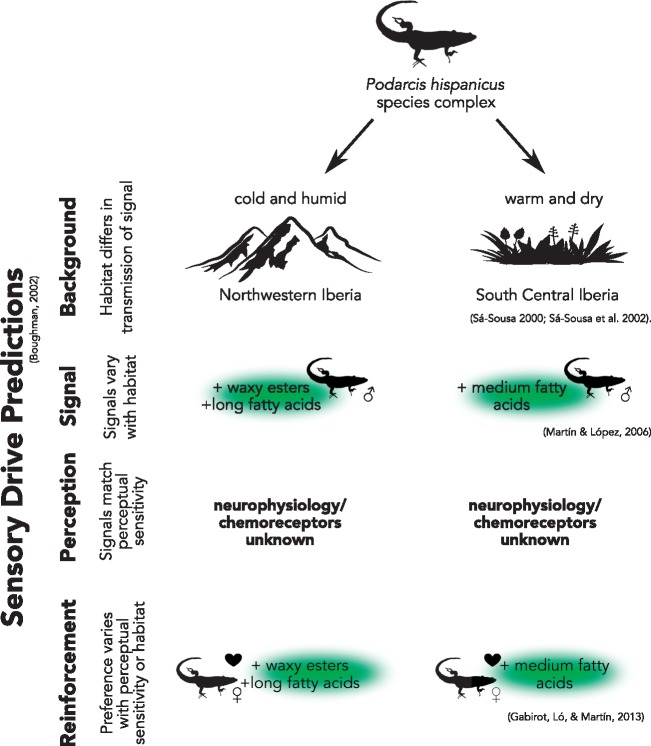Figure 2.
The Iberian wall lizard Podarcis hispanicus illustrates a strong candidate for sensory drive promoting chemosensory divergence and local adaptation. Compounds of the male femoral gland excretions differ based on the environment, in which northern populations have waxier and bulkier compounds that are less volatile and enable more viable signals in the given habitat. Receptors of the perceivers are unknown, but behavioral evidence has demonstrated female preference and male–male recognition of signals based on their own environments. Silhouettes are from vecteezy and all-free-download.com.

